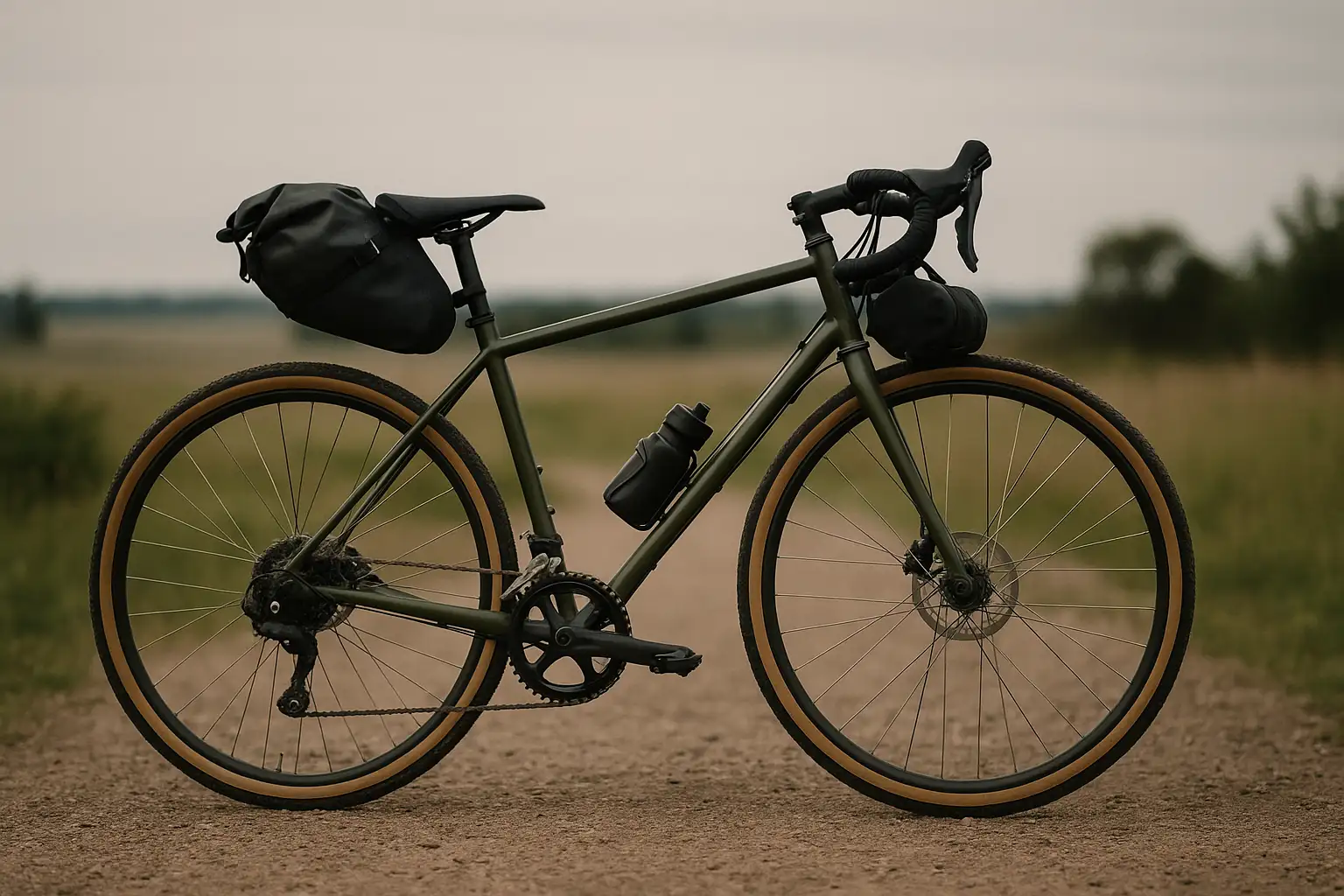Touring comfort isn’t just about soft saddles and upright bars — it’s about how your bike listens to your body over distance.
There’s a quiet shift happening in the touring and gravel community. It’s not loud like a new drivetrain launch or as glamorous as the latest carbon wonderbike. But if you look closely at the setups of those who’ve gone the farthest — who sleep beside their bikes on the high plains, who carry their lives in canvas and cordura — you’ll notice something subtle.
Low stack frames.
Not slammed, aggressive race bikes. But also not hybrid, riser-bar city bikes. These are machines with modest head tubes and balanced cockpits — where the bars sit just a notch below the saddle, inviting you to lean in, not hunch over.
Why Low Stack Matters
“Stack” is the vertical distance from the bottom bracket to the top of the head tube. Lower stack means your handlebars sit lower, and that means your position leans more forward.
This seems counterintuitive, right? Wouldn’t you want to be more upright for comfort on long tours?
Yes — but not always.
The Case for Low Stack Touring
When you’re spending eight hours in the saddle across changing terrain, comfort becomes about distribution, not uprightness. A low stack lets your arms and core share more of the load. It stretches your back just enough to keep blood flowing. You’re less of a sail in headwinds. And on fast descents or off-road tracks, your center of gravity feels planted, not perched.
“I used to ride a high-stack steel tourer with swept-back bars. Felt comfy… until I started descending at speed in Ladakh. Switched to a lower cockpit, and the bike just clicked. More confident, more flow. Never going back.” — Ankit R., solo rider and mechanic, Leh.
Many experienced bikepackers discover this evolution naturally. They start with spacers and risers. Over time, stems flip. Bars drop. Eventually, they’re riding a setup that looks fast but feels measured — not aggressive, but in tune.
Bikes That Get It
Here are some of the best low or mid-stack touring/gravel bikes you can get in 2025. These frames favor a lower handlebar position without sacrificing comfort — ideal for riders who want flow over uprightness.
Low Stack Touring & Gravel Bikes (2025 Edition)
| Bike | Size | Stack (mm) | Reach (mm) | Stack:Reach Ratio | Notes |
|---|---|---|---|---|---|
| Surly Midnight Special | 54 cm | 560 | 389 | 1.44 | Steel all-road frame; responsive handling with ample tire clearance. |
| Salsa Vaya GRX 600 | 55 cm | 609 | 364 | 1.67 | Upright touring geometry; ideal for comfort with drop bars. |
| Mason Bokeh Ti | 54 cm | 568 | 376 | 1.51 | Titanium frame; versatile for fast adventure and bikepacking trips. |
| Triban RC 520 Disc | L | 603 | 385 | 1.57 | Affordable endurance setup; mod-friendly geometry. |
| Kona Sutra SE | 56 cm | 632 | 395 | 1.60 | Classic steel tourer; known for comfort and load stability. |
Always check manufacturer charts — some sizes vary between model years.
Closing Thoughts from the Saddle
Riders who embrace low stack are often hard to spot. They’re not boasting watts or KOMs. They’re just riding — far, quiet, alone or in pairs — on bikes that fit not just their bodies, but their intent.
So if you find yourself fighting your cockpit, if your back aches halfway into a ride, or if your descents feel sketchy, don’t just swap your saddle or bar tape. Look deeper. Maybe your stack’s too high.
And maybe — just maybe — you’re ready for a different kind of comfort.
